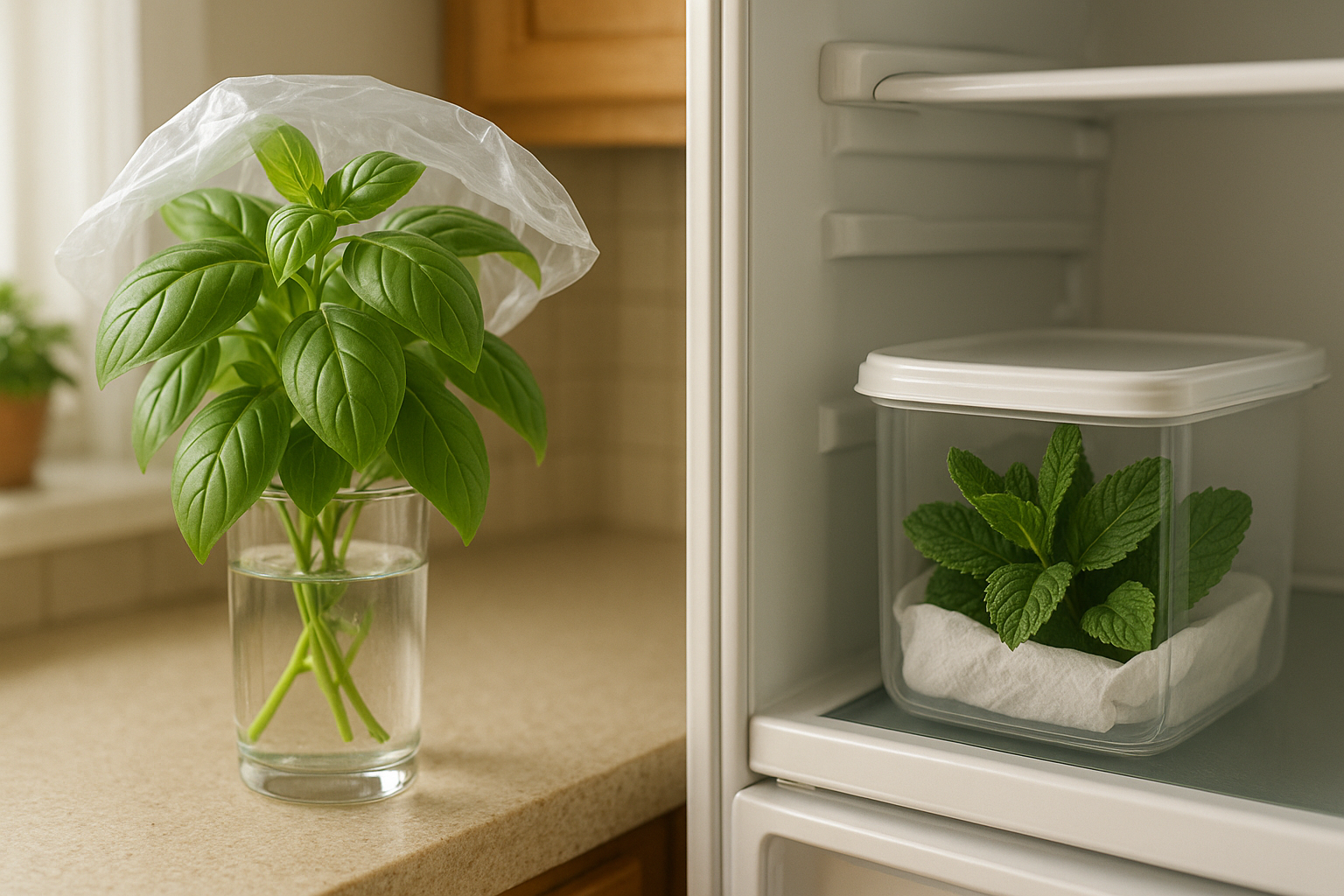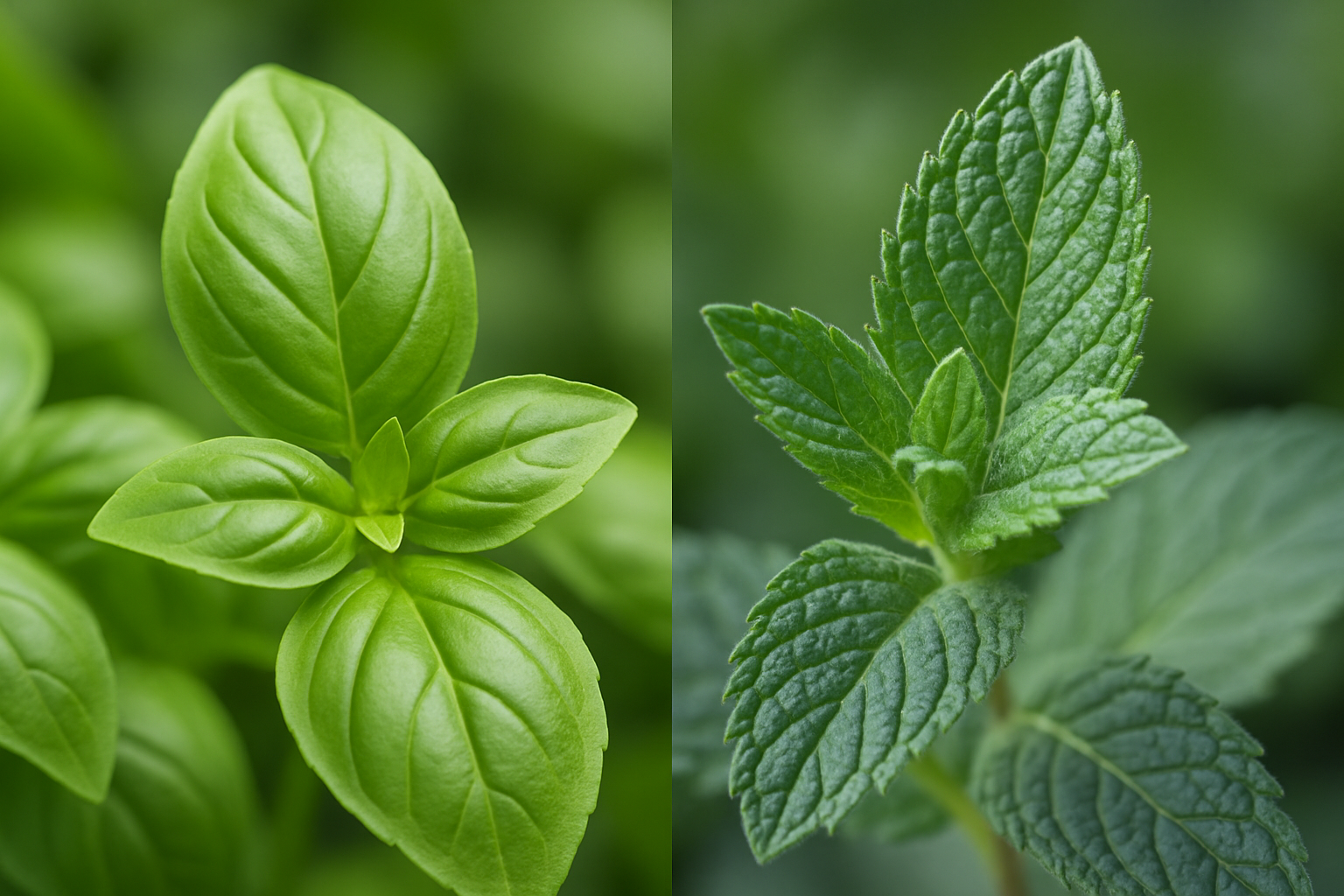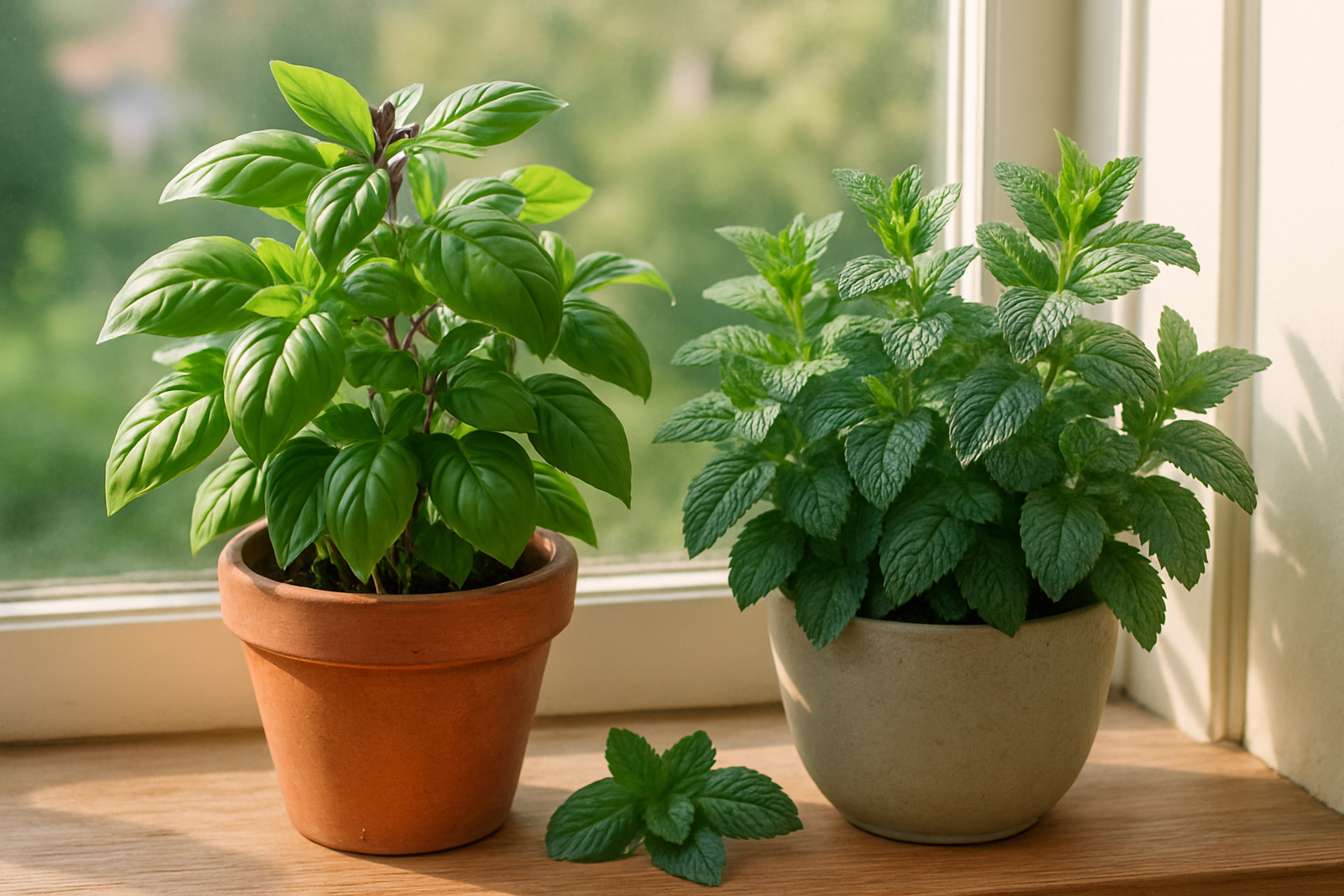Basil and Mint: A Comparison
Basil and mint are two popular herbs commonly found in kitchens and gardens worldwide, each adding a unique touch to dishes and drinks. While both are praised for their fresh, aromatic qualities, basil and mint differ significantly in appearance, flavor, and culinary uses.
From the sweet spiciness of basil in Italian sauces to the cooling zing of mint in teas and desserts, understanding these differences can help you add the perfect flavor to any meal. Knowing how to grow and care for basil versus mint is also a game changer for gardeners, as each plant has its own preferences and quirks.
For anyone who loves cooking or gardening, mastering these herbs can truly elevate your skills.
Basil and Mint: Key Differences
Basil and mint might both be leafy green herbs, but a closer look reveals plenty of differences. Basil leaves are typically smooth-edged, oval-shaped, and come to a gentle point. Their color ranges from bright green in sweet basil to the deep purple of some Thai basil varieties, and they feel soft and slightly silky to the touch.
In contrast, mint leaves tend to be more elongated with serrated or toothed edges and have a textured, sometimes fuzzy surface; their green can have bluish or grayish undertones, especially in peppermint or spearmint.
The flavor distinction is even more obvious: basil tastes sweet with peppery and spicy undertones, reminiscent of clove and anise—sweet basil is mild, while Thai basil adds a licorice twist. Mint brings a pronounced cooling effect, thanks to menthol, with peppermint delivering a brisk, sharp hit and spearmint offering a gentler, sweeter flavor.
These differences make basil a classic for tomato dishes, pestos, or Thai curries, while mint stands out in cool drinks, desserts, or paired with lamb. Knowing these visual and flavor cues can help you choose the right herb for your recipes, whether you’re browsing the grocery aisle or picking fresh from the garden.
Basil and Mint: Fresh Flavors with Distinct Culinary Roles
Basil and mint each bring a burst of freshness to kitchens worldwide, but their culinary roles are distinct and exciting. Basil is a classic in Italian cuisine—think vibrant pesto, caprese salads, or as a finishing touch on Margherita pizzas. It also features prominently in Thai dishes, like spicy curries and stir-fries, adding deep, peppery notes.
Mint, on the other hand, shines in sweet and cooling applications: muddled into mojitos or iced teas, sprinkled over fruit salads, or whipped into classic desserts like chocolate mint brownies. It also adds punch to savory fare, such as Middle Eastern tabbouleh or lamb kebabs.
While basil and mint share freshness and can sometimes substitute for one another in salads or cocktails, they’re rarely direct swaps—basil’s warmth doesn’t suit desserts, and mint’s cooling essence may feel out of place in tomato sauces.
For adventurous cooks, consider blending basil into lemonade for a herbal twist, or chopping mint into guacamole for a pop of brightness. Both herbs can also be infused into syrups or oils to flavor everything from dressings to baked goods. By recognizing their strengths—and limits—you’ll open up a world of creative, flavor-packed possibilities in your cooking.
Basil and Mint: Powerhouse Herbs for Health and Nutrition
Basil and mint are two herbs that pack a punch when it comes to health benefits and nutrition. Basil is rich in antioxidants, such as flavonoids and polyphenols, which help protect your cells from free radical damage. Its anti-inflammatory properties may support joint and heart health, and some studies suggest basil can help manage blood sugar levels.
On the other hand, mint is famous for settling the stomach and aiding digestion—just think of how a cup of peppermint tea soothes after a heavy meal. Mint is also known for its ability to freshen breath and has a gentle calming effect that may ease stress.
Nutritionally, both herbs are surprisingly potent:
- Basil offers a good dose of vitamin K (important for bone health), along with vitamin A and manganese.
- Mint supplies vitamin A, iron, and folate.
Sprinkling chopped basil on salads or adding fresh mint to your water are easy ways to enjoy these wellness-boosting herbs daily.
Basil and Mint: Growing Tips for Home Gardeners
Basil and mint are two favorite herbs for home gardeners, but their growing needs differ in key ways.
Basil thrives in full sun, preferring at least 6 hours of light daily and well-drained, fertile soil. It likes consistent moisture but hates soggy roots—water when the top inch of soil feels dry.
Mint, in contrast, tolerates partial shade and is far less fussy about soil, making it adaptable but also notoriously invasive.
For beginners, basil is often the go-to for containers, while mint should almost always be planted in pots to keep it from overtaking your garden; if you plant mint in the ground, consider a buried container or root barrier.
Regularly pinch basil’s stems to prevent bolting and encourage bushy growth. With mint, trim aggressively to keep it under control and refresh its flavor.
Watch for aphids and whiteflies on basil, and spider mites on mint—treat early with insecticidal soap or a strong water spray.
To maximize your harvest, snip basil just above a leaf pair and harvest in the morning; for mint, cut sprigs regularly.
Store both in a glass of water on your counter or wrap in a damp paper towel in the fridge to keep them vibrant and flavorful longer.
How to Keep Basil and Mint Fresh

Basil and mint stay freshest when treated like cut flowers: trim the stems and place them in a glass of water on your kitchen counter. Loosely cover the herbs with a plastic bag to create extra humidity—this keeps basil’s tender leaves vibrant for days. Just be sure to change the water daily.
Mint holds up better in the fridge; wrap sprigs in a slightly damp paper towel and tuck them inside an airtight container. This can keep mint fresh for up to a week.
For longer storage, both herbs can be frozen. Simply chop and portion them into ice cube trays with a little water or olive oil, then pop the cubes straight into sauces or drinks.
Drying works better for mint than for basil, since basil tends to lose much of its flavor and color. To dry mint, hang bundles to air-dry, then crumble into jars for teas or recipes.
Avoid letting herbs wilt in soggy bags or hot kitchens. If you have extra herbs, try blending them into pesto, infusing them into syrups, or freezing them in olive oil for easy addition to future meals.
When Choosing Between Basil and Mint

It comes down to taste and the dish you’re making. Basil offers a sweet, peppery flavor that works great in Italian dishes like pasta, pesto, and salads, while mint’s cool, refreshing bite shines in teas, desserts, and Mediterranean or Southeast Asian cuisine.
If you love bold, earthy flavors, basil is a go-to; if you prefer something lighter and zesty, try mint. Don’t be afraid to experiment—grow both herbs at home for easy access and fresh flavor.
Whether you’re elevating a simple salad or crafting a cocktail, basil and mint each bring something special.
